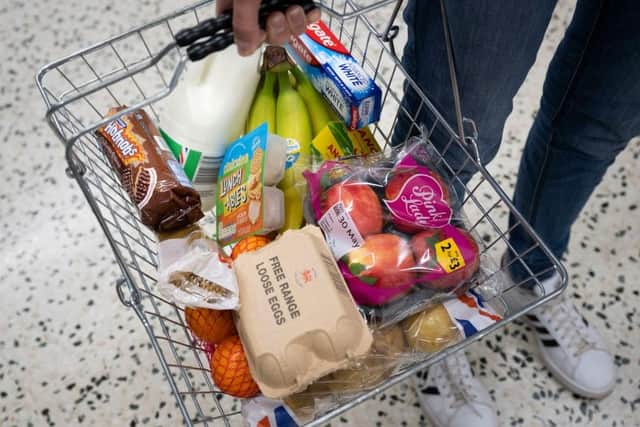West Northamptonshire Council pledges to help 17,500 households through winter cost of living crisis
and live on Freeview channel 276
Around 17,500 of the hardest-hit households could get up to £600 each in financial support from West Northamptonshire Council to help with the cost of living crisis this winter.
Families with children receiving free school meals, low-paid workers and residents facing monetary hardship will benefit from just under £2.6 million in economic support until March 2023.
Advertisement
Hide AdAdvertisement
Hide AdThe council says it will work closely with neighbourhood voluntary organisations to identify those in need of help from the third tranche of money from the government’s Household Support Fund, particularly those who may be missed by the benefits system.


Matt Golby cabinet member for adult social care on the Tory-run council said: “We know the pressures many are currently facing, which is why it is proposed that this fund targets support to these most vulnerable households across the county.
“The distribution is directed to primarily funding the lower income sector of the working community, and families with children.
“This is closely aligned to the areas of deprivation within the region, thus ensuring that the communities living in areas of highest poverty are prioritised.
Advertisement
Hide AdAdvertisement
Hide Ad“The distribution of these funds will meet the wider communities’ financial needs, where other grants and funding are not available.
“It provides real benefit to underpin the West Northamptonshire Anti-Poverty Strategy and ensure residents most in need receive support — especially those who may not otherwise be identified through the benefits system.”
According to the council, 11,200 families eligible for free school meals will get £15-per-week school vouchers during the next two half-terms and Christmas holidays.
Around 4,400 eligible households with a low-paid worker will receive up to £200 in food vouchers, cash in the bank or money to cover related essential household costs between now and March.
Advertisement
Hide AdAdvertisement
Hide AdAnd a £650,000 community engagement fund will be distributed through community volunteers and foodbanks with payments of up to £250 per household assessed on a case-by-case basis.
Details of how and when the funds will be distributed will be made available in the coming weeks.
Energy bills rose by around 19 percent on October 1, despite the government’s Energy Price Guarantee scheme reducing the effect of soaring wholesale prices.
Households are already receiving a £400 discount on energy bills and a £150 council tax rebate announced by former chancellor Rishi Sunak earlier this year.
Advertisement
Hide AdAdvertisement
Hide AdSeptember’s inflation figures are set to be announced on Tuesday (October 18) with the Bank of England predicting a peak at around 11 percent in the Consumer Prices Index in October and remain above 10 percent for “a few months” after that.
Figures from the Kantar Worldpanel group of analysts this week showed that grocery inflation ran at 13.9 percent in the 12 weeks to October 2.
That’s the equivalent to an extra £643 on top of an average annual grocery bill — a sharp rise from last month when the rate was reported at 12.4 percent, adding an extra £571.
Their report revealed dog food, milk and margarine remained among items that saw the biggest increases while supermarket chains saw increasing demand for their cheapest, own-brand items.

